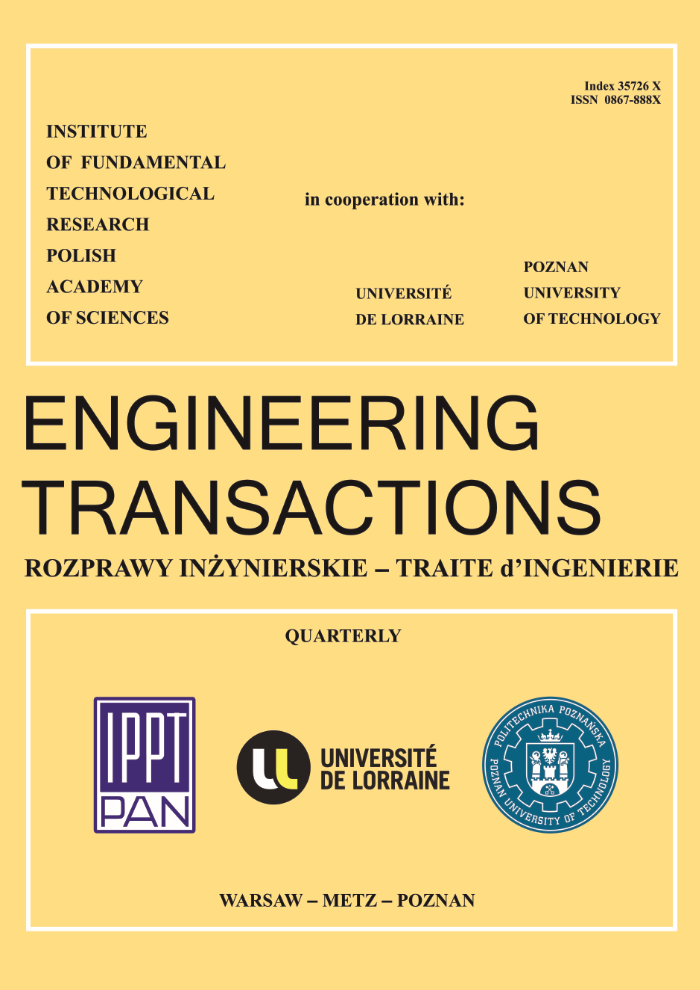Phase Transformation and Deformation Behavior of Steels with Different Content of Metastable Austenite
Abstract
Abstract: In this investigation three steels HCT 780T, AISI 347 and HSD® 600 with different content of metastable austenite and different austenite stability were monotonically loaded at ambient temperature. Using x-ray diffraction and scanning electron microscopy changes in the microstructure were characterized in detail. Hence, the most important mechanisms, which occur by deformation were determined.Keywords:
metastable austenite, TRIP, TWIP, XRD, EBSD, ECCIReferences
[1] Grässel O., Krüger L., Frommeyer G., Meyer L.W., High strength Fe-Mn-(Al, Si) TRIP/TWIP steels development – properties – application, International Journal of Plasticity, 16(10–11): 1391–1409, 2000, https://doi.org/10.1016/S0749-6419(00)00015-2.
[2] Weiß A. et al., High-strength and cold-formable austenitic cast steel with TRIP / TWIP properties [in German], Giesserei 100, 4, 54–65, 2013, www.kug.bdguss.de/fileadmin/content/themen/Hochfester_und_kaltumformbarer_austenitischer_Stahlguss/G-4-13-S54-65.pdf
[3] Saeed-Akbari A., et al., Derivation and Variation in Composition-Dependent Stacking Fault Energy Maps Based on Subregular Solution Model in High-Manganese Steels, Metallurgical and Materials Transactions A, 40(13): 3076–3090, 2009, https://doi.org/10.1007/s11661-009-0050-8.
[4] Schäperkötter M., et al., Energy saving, CO2 emission avoidance and resource conservation in the production and application of (high-strength and ductile) HSD® steels, final report on the BMBF Project 01 RI 05001 [in German], 2009, https://bibliographie.ub.rub.de/entry/6dcb0627-5086-4fda-9552-7b9522c8bc1b.
[5] Frölich D. et al., Investigation of wear resistance of dry and cryogenic turned metastable austenitic steel shafts and dry turned and ground carburized steel shafts in the radial shaft seal ring system, Wear, 328–329, 123–131, 2015, https://doi.org/10.1016/j.wear.2015.02.004.
[6] Weidner A., et al., Observation of stacking faults in a scanning electron microscope by electronchannelling contrast imaging, International Journal of Materials Research, 102(1): 3–5, 2011, https://doi.org/10.3139/146.110448.
[2] Weiß A. et al., High-strength and cold-formable austenitic cast steel with TRIP / TWIP properties [in German], Giesserei 100, 4, 54–65, 2013, www.kug.bdguss.de/fileadmin/content/themen/Hochfester_und_kaltumformbarer_austenitischer_Stahlguss/G-4-13-S54-65.pdf
[3] Saeed-Akbari A., et al., Derivation and Variation in Composition-Dependent Stacking Fault Energy Maps Based on Subregular Solution Model in High-Manganese Steels, Metallurgical and Materials Transactions A, 40(13): 3076–3090, 2009, https://doi.org/10.1007/s11661-009-0050-8.
[4] Schäperkötter M., et al., Energy saving, CO2 emission avoidance and resource conservation in the production and application of (high-strength and ductile) HSD® steels, final report on the BMBF Project 01 RI 05001 [in German], 2009, https://bibliographie.ub.rub.de/entry/6dcb0627-5086-4fda-9552-7b9522c8bc1b.
[5] Frölich D. et al., Investigation of wear resistance of dry and cryogenic turned metastable austenitic steel shafts and dry turned and ground carburized steel shafts in the radial shaft seal ring system, Wear, 328–329, 123–131, 2015, https://doi.org/10.1016/j.wear.2015.02.004.
[6] Weidner A., et al., Observation of stacking faults in a scanning electron microscope by electronchannelling contrast imaging, International Journal of Materials Research, 102(1): 3–5, 2011, https://doi.org/10.3139/146.110448.






